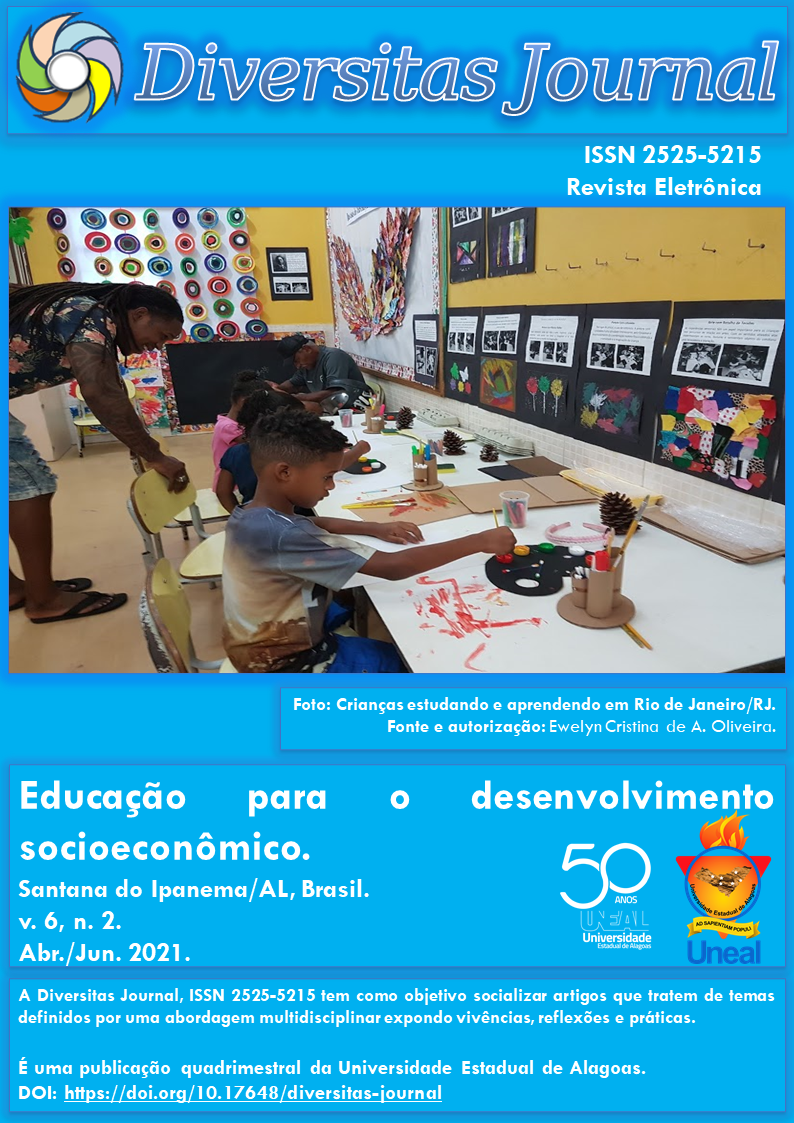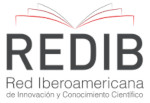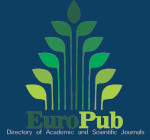Aspectos biométricos e químicos dos frutos da manga (Mangifera indica l.) variedade “Carlota”
DOI:
https://doi.org/10.17648/diversitas-journal-v6i2-1541Abstract
ABSTRACT: Varietie”Carlota” mango is a native species with great commercial appeal in some regions of Bahia due to its very attractive organoleptic characteristics, with great potential for processing and also as a nutrient source from the peel and pulp to increase a healthier diet. For that matter, this work aimed to carry out biometric and chemical analyzes of the peel and pulp of mango Var. “Carlota”. to obtain information about their agro-industrial, functional, and nutritional characteristics. To carry out the work, physical, chemical (biochemical, mineral) and instrumental color analyzes were performed. According to the results, it can be concluded that: The characteristics of the fruit, such as pulp yield, content of soluble solids and color, distinguish mango Var. “Carlota” with good potential for both fresh fruit consumption and processing. The peel and pulp chemical composition demonstrated the existence of high levels of nutrients and suggest that they can be used to enrich diets, stimulating the development of new products. Vitamin C and total phenolics levels give great functional importance to the fruits, which used frequently can contribute to the reduction and prevention of some diseases. The content for most macronutrients were higher for the peel than for pulp. Peels are normally discarded in nature which consists of a great waste of nutrients due to a lack of use, and an increased level.
KEYWORDS: native fruits, centesimal composition, peel, and pulp.
Metrics
References
A N D R A D E, E. C. B.; B A R R O S, A. M.; M A G A L H Ã E S, A. C. P.; C A S AT R O S, L.L.C.; TAKESEI, I. Comparação dos teores de cobre e zinco em leguminosas cruas e após serem processadas termicamente em meio salino e aquoso. Ciência e Tecnologia deAlimentos, Campinas, v.24, n.3, p.316-318, 2004
AGATONOVIC-KUSTRIN, S.; KUSTRIN, E.; MORTON, D. W. Phenolic acids contribution to antioxidant activities and comparative assessment of phenolic content in mango pulp and peel.South African journal of botany, v. 116, p. 158-163, 2018.
AKIN-IDOWU, P. E.; ADEBO, G. U.; EGBEKUNLE, K. O.; OLAGUNJU, Y. O.; ADERONMU, O. I.; ADULOJU, A. O. Cultivars Based on Physicochemical, Nutritional, Antioxidant, and Phytochemical Traits in South West Nigeria.International Journal of Fruit Science, p. 1-25, 2020.
ANCOS, B.; SÁNCHEZ-MORENO, C.; ZACARÍAS, L.; RODRIGO, M. J.; AYERDÍ, S. S.; BENÍTEZ, F. J. B.; GONZÁLEZ-AGUILAR, G. A. Effects of two different drying methods (freeze-drying and hot air-drying) on the phenolic and carotenoid profile of ‘Ataulfo’mango by-products.Journal of Food Measurement and Characterization, v. 12, n. 3, p. 2145-2157, 2018.
AOAC. Association of Official Analytical Chemists. Official methods of analysis. 14 ed. Arlington, VA, USA, 1984.
AOAC. Association of Official Analytical Chemists.Official methods of analysis. USA16. ed. Arlington, 1997
ARAÚJO, L. D. F.; AGUIAR, E. M.; SILVA, I. D.; XAVIER, G. A. M.; BEZERRA, M. C. Utilização de subprodutos da manga como alimentos alternativos na dieta dos animais: revisão de literatura.Nutri-Time, revista eletronica, Viçosa, v. 13, n. 02, p. 1983-9006, 2016.
BADDI, J.; VIJAYALAKSHMI, D.; DURGANNAVAR, N. A.; CHANDRU, R.Mango peel: A potential source of natural bioactive phyto-nutrients in functional food.Asian Journal of Dairy and Food Research, v. 34, n. 1, p. 75-77, 2015.
BENASSI, M.T. Análise dos efeitos de diferentes parâmetros na estabilidade de vitamina C em vegetais processados. 1990. 69f. Dissertação (Mestrado em Ciência de Alimentos) -Faculdade de Engenharia de Alimentos, Universidade Estadual de Campinas, Campinas, 1990.
BENEVIDES, S. D.; RAMOS, A. M.; STRINGHETA, P. C.; CASTRO, V. C. Qualidade da manga e polpa da manga Ubá. Ciência e Tecnologia de Alimentos, v. 28, n. 3, p. 571-578, 2008.
BEZERRA, T. S.; COSTA, J. M. C.; AFONSO, M. R. A.; MAIA, G. A ROCHA, E. M. F. F. Avaliação físico-química e aplicação de modelos matemáticos napredição do comportamento de polpas de manga desidratadas em pó. Revista Ceres,Viçosa, v. 58, n.3, p. 278-283, 2011.
BRASIL, Portaria nº. 685/98. Aprova o Regulamento Técnico: “Princípios Gerais para o Estabelecimento de Níveis Máximos de Contaminantes Químicos em Alimentos” e seu Anexo: “Limites máximos de tolerância para contaminantes inorgânicos” complementa e faz algumas modificações no Decreto Lei nº 55.871, de 26 de março de 1965. Disponível em:http://bvsms.saude.gov.br/bvs/saudelegis/anvisa/1998/prt0685_27_08_1998_rep.html Acesso em: março 2020.
BRASIL. RESOLUÇÃO DA DIRETORIA COLEGIADA –RDC Nº 269, DE 22 DE SETEMBRO DE 2005. Dispõe sobre o Regulamento Técnico sobre a ingestão recomendada (IDR) de proteínas, vitaminas e sais minerais. Diário Oficial da União, Brasília, DF, 22 de set. 2005.
CARVALHO, C. D.; KIST, B. B.; SANTOS, C. D. TREICHEL, M.; FILTER, C. F.Anuário brasileiro da fruticultura 2017. Editora Gazeta Santa Cruz, Santa Cruz do Sul. 2017.
CHITARRA, MARIA ISABEL FERNANDES; CHITARRA, A. B. Perdas pós-colheita.Pós-colheita de frutas e hortaliças: fisiologia e manuseio.2ªed. Lavras, UFLA, p. 151-202, 2005.
DAIUTO, É. R.; TREMOCOLDI, M. A.; ALENCAR, S. M. D.; VIEITES, R. L.; MINARELLI, P. H Composição química e atividade antioxidante da polpa e resíduos de abacate'Hass'.Revista Brasileira de Fruticultura, v. 36, n. 2, p. 417-424, 2014.
DAMIANI, C.; BOAS, V..; DE BARROS, E. V.; SOARES JUNIOR, M. S.; CALIARI, M.; PAULA, M. D. L. D.; ASQUIER, E. R. Avaliação química de geleias de manga formuladas com diferentes níveis de cascas em substituição à polpa.Ciência e Agrotecnologia,33(1), 177-184. 2009.
DONADIO, L.C.; ZACCARO, R.P.Valor nutricional de frutas. Disponível em:https://www.todafruta.com.br/manga/. Acesso em: 20. Abr. 2020.
FIORINI, L. S. Dossiê: os minerais na alimentação São Paulo: Food Ingredients, Brasil, 2008. p.48-59.
FRANCO, G. Tabela de composição química dos alimentos. 9ª ed. São Paulo: Editora Atheneu, 2008.
FOLEGATTI, M. I da.; MATSUURA, F. C. A. U.; TORREZAN, F.; BOTREL, N.; SOUZA FILHO, M. de S. M.; AZEREDO, H. M. C.; BRITO, E. S. de.; SOUZA NETO, M. A. Processamento e frutos. In. GENÚ, P. J. C.; PINTO, A. C. de Q. (Eds). A cultura da mangueira. Brasília: Embrapa Informação Tecnológica, 2002. p. 409-431.
GALLI, J.A.; ARRUDA-PALARAINI, M.C. de; FISCHER, I. H.; MARTINS, A. L. M. Características físico-quimicas de variedades da manga cultivadas em sistema orgânico. Cadernos de Agroecologia, v.6, n.2, 2011.
GIONDI, M.; BASHA, S.A.; BHASKAR, J.J.; SALIMATH, P.V.; PRASADA, R. U.J. Anti‐diabetic effect of dietary mango (Mangifera indica L.) peel in streptozotocin‐induced diabetic rats.Journal of the Science of Food and Agriculture, v. 95, n.5, p.991-999, 2015.
GUSMÃO, E.; DE ALMEIDA VIEIRA, F.; DA FONSECA JÚNIOR, É. M. Biometria de frutos e endocarpos de murici (Byrsonima verbascifolia Rich. ex A. Juss.).Cerne, v. 12, n. 1, p. 84-91, 2006.
HABIBI, F.; RAMEZANIAN, A. Vacuum infiltration of putrescine enhances bioactive compounds and maintains quality of blood orange during cold storage. Food Chemistry, v. 227, p. 1-8, 2017
IBGE. Produção Agrícola Municipal, 2018. Disponível em : https://sidra.ibge.gov.br/pesquisa/pam/tabelas. Acesso em: 30 de Agosto de 2020.
JACO.B, A. G.; ETONG, D. I.; TIJJANI, A. Proximate, mineral and anti-nutritional compositions of melon (Citrullus lanatus) seeds.British Journal of Research,v. 2, n. 5, p. 142-151, 2015.
JERONIMO, E. M.; BRUNINI, M. A.; ARRUDA, M. C.de.; CRUZ, J. C. S.; FISCHER, I. H.;GAVA, G. J. C. Conservação pós-colheita de mangas ‘Tommy Atkins’ armazenadas sobatmosfera modificada. Semina: Ciências Agrárias, Londrina, v.28, n.3, p. 417-426, 2007
LEMOS, D. M.; SILVA, S. F.; LIMA, J. C. B.; SILVA, F. B.; SOUZA, E. P. Parâmetros químicos, físicos e físico-químicos de resíduos da manga.Revista Verde de Agroecologia e Desenvolvimento Sustentável,8(2), 01-03.2013.
LIMA, M. S. S.; DANTAS, A. C. V. L.; FONSECA, A. A. O.; BARROSO, J. P.Caracterização de frutos de genótipos selecionados de umbu-cajazeira (Spondias sp.).Interciencia,v. 40, n. 5, p. 311-316, 2015.
LI, B.W.; CARDOZO, M.S. Nonenzymatic-gravimetric determination o dietary fiber in fruits and vegetables. Journal of AOAC Internationl, Arlington, v.77, n.3, p.687-689, 1994.
LUNA, I.R.G.; SILVA, S.M.; SOUSA, A.S.B.; LIMA, R.P.; NETO NASCIMENTO, E.C. caracterização física de frutos de variedades de mangueiras ocorrentes no município de Areia-PB. In: Congresso Técnico Científico da Engenharia e da Agronomia CONTECC’2016. Foz do Iguaçu-PR, 2016.
MADALAGERI, D. M.; BHARAT, P. UDA; KAGE, U. Physicochemical properties, nutritional and antinutritional composition of pulp and peel of three mango varieties. International Journal of Educational Science and Research, v.7, n. 3, Jun 2017
MAHAN, L. K.; ESCOTT-STUMP, S., RAYMOND, J.L. Krause Alimentos, Nutrição e Dietoterapia. Rio de Janeiro: Elsevier, 2012.
MAIA, M. C. C.; DE OLIVEIRA, L. C.; VASCONCELOS, L. F. L.; LIMA NETO, F. P.; YOKOMIZO, G. K. I. & ARAÚJO, L. D. Repetibilidade de características quantitativas de frutos em seleções elite de manga rosa.EmbrapaAgroindústria Tropical-Artigo em periódico indexado (ALICE), 2017.
MAIA, M. C. C.; RESENDE, M. D. V.; OLIVEIRA, L. C.; VASCONCELOS, L. F. L.; LIMA NETO, F. P. Análise genética em genótipos de manga rosa via REML/BLUP.Embrapa Semiárido-Artigo em periódicoindexado (ALICE), 2014.
MARQUES, A.; CHICAYBAM, G.; ARAUJO, M. T.; MANHÃES, L. R. T.; SABAA-SRUR, A. U. Composição centesimal e de minerais de casca e polpa de manga (Mangifera indica L.) cv. Tommy Atkins.Revista Brasileira de Fruticultura,32(4), 1206-1210. 2010.
MENDES-FILHO, N. E.; CARVALHO, M. P.; DE SOUZA, J.M.T. Determinação de macrocomponentes e nutrientes minerais da polpa de manga (Mangifera indica L.).Revista Eletrônica Perspectivas da Ciência e Tecnologia-ISSN: 1984-5693, v. 6, n. 1-2, p. 22, 2014.
MINOLTA. Chroma meter CR-400/410: instruction manual. Osaka, 2007. 156 p.
MONTEIRO, T.H.; VANNUCCHI, H. Funções plenamente reconhecidas de nutrientes: fósforo. ILSI Brasil, São Paulo, v.15, p.20, 2010.
MOTTA, J. D.; DE MELO QUEIROZ, A. J.; DE FIGUEIRÊDO, R. M. F.; DE SOUSA, K. D. S. M.Índice de cor e sua correlação com parâmetros físicos e físico-químicos de goiaba, manga e mamão.Comunicata Scientiae,v. 6, n. 1, p. 74-82, 2015.
OMS -Organização Mundial da Saúde.Um estilo de vida saudável.2016. Disponível emhttp://www.euro.who.int/en/health-topics/disease-prevention/nutrition/a-healthy-lifestyle.Acesso em: 12 mai. 2020.
PINTO, W. D. S.; DANTAS, A. C. V. L.; FONSECA, A. A. O., DA SILVA, C. A.; JESUS, S. C. D.; CALAFANGE, P. L. P.; ANDRADE, E. M. Caracterização física, físico-química e química de frutos de genótipos de cajazeiras.Pesquisa Agropecuária Brasileira, v. 38, n. 9, p. 1059-1066, 2003.
PLEGUEZUELO, C. R. R.; DURAN ZUAZO, V. H.; MURIEL FERNÁNDEZ, J. L.; FRANCO TARIFA, D. Physicochemical quality parameters of mango (Mangifera indica L.) fruits grown in a Mediterranean subtropical climate (SE Spain). Journal of Agricultural Science and Technology, v. 14, n. 2, p. 365-374, 2012
QUEIROZ DE MEDEIROS, P. V.; ANDRADE, G.; PEREIRA, R. G.; MENDONÇA, V.; NETO, J. F. Produção e qualidade de frutos de mangueira'Tommy Atkins' adubadas com superfosfato simples no municipio de Assú-RN.Brazilian Journal of Applied Technology for Agricultural Science/Revista Brasileira de Tecnologia Aplicada nas Ciências Agrárias, v. 7, n. 3, 2014.
QUINTANA-OBREGÓN, E.; MARTÍN-HERNÁNDEZ, S.; MUY-RANGEL, M.; VARGAS-ORTIZ, M. Valorization of mango (Mangifera indica L.) pericarp powders as an alternative for the generation of functional foods.TIP Revista Especializada en Ciencias Químico-Biológicas,v. 22, n. 1, 2019.
ROMELLE, Feumba Dibanda; RANI, A.; MANOHAR, Ragu Sai. Chemical composition of some selected fruit peels.European Journal of Food Science and Technology, v. 4, n. 4, p. 12-21, 2016.
RUFINI, J. C. M.; GALVÃO, E. R.; PREZOTTI, L.; SILVA, M. B. D.; PARRELLA, R. A. D. C. Caracterização biométrica e físico-químicados frutos de acessos de manga'Ubá'.Revista Brasileira de Fruticultura,33(2), 456-464. 2011.
SABINO, L. B. S.; GONZAGA, M. L. C.; SOARES, D. J.; LIMA, A. C. S.; LIMA, J. S. S.; ALMEIDA, M. M. B.; FIGUEIREDO, R. W. Bioactive compounds, antioxidant activity, and minerals in flours prepared with tropical fruit peels.Acta Alimentaria,44(4), 520-526. 2015
SACHINI, R.; STEFFENS, C. A.; MARTIN, M. S. D.; SCHVEITZER, B.; FENILI, C. L.; PETRI, J. L.neral contents in the skin and flesh of fruits of apple cultivars.Revista Brasileira de Fruticultura,v. 42, n. 2, 2020.
SANTOS, A. C. A.; MARQUES, M. M. P.; DE OLIVEIRA SOARES, A. K.; DE FARIAS, L. M.; FERREIRA, A. K. A.; CARVALHO, M. L. Potencial antioxidante de antocianinas em fontes alimentares: revisão sistemática.Revista Interdisciplinar, v. 7, n. 3, p. 149-156, 2014.
SANTOS, M. B. D.; CARDOSO, R. L.; FONSECA, A. A. D. O.; CONCEIÇÃO, M. D. N. Caracterização e qualidade de frutos de umbu-cajá (Spondias tuberosa x S. mombin) provenientes do recôncavo sul da Bahia.Revista Brasileira de Fruticultura, v. 32, n. 4, p. 1089-1097, 2010.
SINGLETON, V.L.; ORTHOFER, R.; LAMUELA-RAVENTÓS, R.M. Analysis of total phenols and other oxidation substrates and antioxidants by means of Folin-Ciocateau reagent.Methods Enzymol.,San Diego, v. 299, p. 152-178, 1999.
SCHIASSI, M.C.E.V.; DE SOUZA, V.R.; LAGO, A.M.T.; CAMPOS, L.G.; QUEIROZ, F.Frutos da região do Cerrado brasileiro: caracterização físico-química, compostos bioativos, atividades antioxidantes e avaliação sensorial.Química de Alimentos,v. 245, p.305-311, 2018.
SILVA, Carlos Eduardo de Farias; ABUD, Ana Karla de Souza. Tropical fruit pulps: Processing, product standardization and main control parameters for quality assurance.Brazilian Archives of Biology and Technology,v. 60, 2017.
SILVA, L. M. R.; DE FIGUEIREDO, E. A. T.; RICARDO, N. M. P. S.; VIEIRA, I.G. P.; DE FIGUEIREDO, R. W.; BRASIL, I. M.; GOMES, C. L Quantificação de compostos bioativos em polpas e subprodutos de frutas tropicais do Brasil.Química de alimento,143, 398-404. 2014.
SUBEDI, P. P.; WALSH, K. B.; OWENS, G. Prediction of mango eating quality at harvest using short-wave near infrared spectrometry.Postharvest Biology and Technology,Amsterdam, v. 43, n. 3, p. 326-334, 2007.
VIECCELLI, J. C.; SIQUEIRA, D. L. D.; BISPO, W. M. D. S.; LEMOS, L. M. Characterization of leaves and fruits of mango (Mangifera indica L.) cv. Imbu.Revista Brasileira de Fruticultura,v. 38, n. 3, 2016.
VITHANA, Mekhala Dinushi Kananke; SINGH, Zora; JOHNSON, Stuart Keith. Harvest maturity stage affects the concentrations of health-promoting compounds: Lupeol, mangiferin and phenolic acids in the pulp and peel of ripe ‘Kensington Pride’mango fruit.Scientia Horticulturae, v. 243, p. 125-130, 2019.
WURLITZER, N.; LIMA, J.; ADRIANO, A.; DAMIÃO, B.; de OLIVEIRA, M. F.; de SOUZA, A. C. R.; RYBKA, A. Avaliação de características físico-químicas de polpas e sensoriais de sucos de manga das variedades Tommy Atkins, Palmer, Kent e Keitt.Embrapa Agroindústria Tropical-Boletim de Pesquisa e Desenvolvimento (INFOTECA-E),2019.
LI, B.W.; CARDOZO, M.S. Nonenzymatic-gravimetric determination o dietary fiber in fruits and vegetables. Journal of AOAC Internationl, Arlington, v.77, n.3, p.687-689, 1994.
YAHIA, Elhadi M. The contribution of fruit and vegetable consumption to human health.Fruit and vegetable phytochemicals, p. 3-51, 2010.
Downloads
Published
How to Cite
Issue
Section
License
Copyright (c) 2021 Antonio Augusto Oliveira Fonseca, Railda Santos de Jesus, Candice Nóbrega Carneiro, Samira Maria Peixoto Cavalcante da Silva, Daniele de Souza Hansen, Sarah dos Santos Valentim

This work is licensed under a Creative Commons Attribution 4.0 International License.
The Diversitas Journal expresses that the articles are the sole responsibility of the Authors, who are familiar with Brazilian and international legislation.
Articles are peer-reviewed and care should be taken to warn of the possible incidence of plagiarism. However, plagiarism is an indisputable action by the authors.
The violation of copyright is a crime, provided for in article 184 of the Brazilian Penal Code: “Art. 184 Violating copyright and related rights: Penalty - detention, from 3 (three) months to 1 (one) year, or fine. § 1 If the violation consists of total or partial reproduction, for the purpose of direct or indirect profit, by any means or process, of intellectual work, interpretation, performance or phonogram, without the express authorization of the author, the performer, the producer , as the case may be, or whoever represents them: Penalty - imprisonment, from 2 (two) to 4 (four) years, and a fine. ”















.png)




